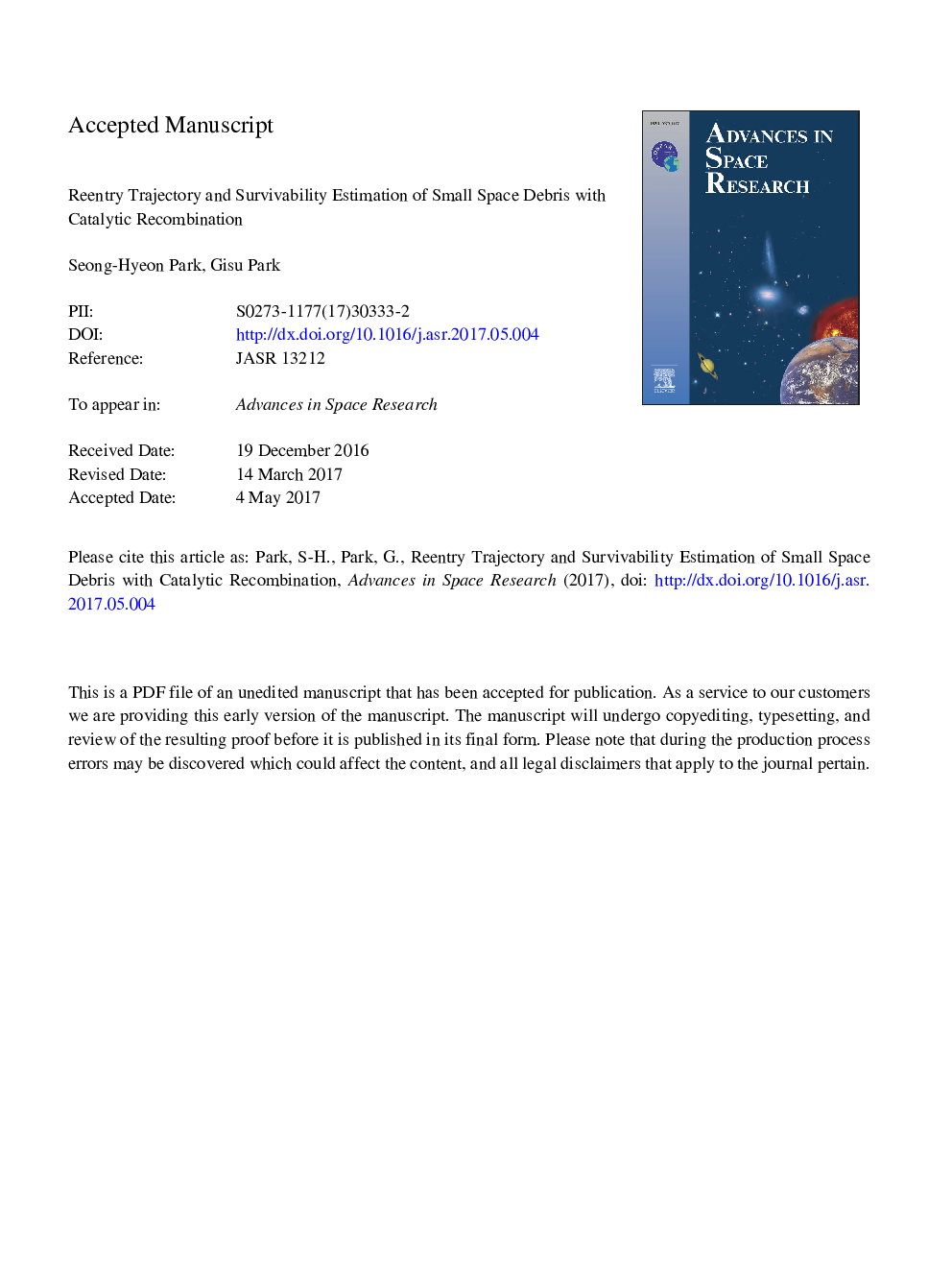| Article ID | Journal | Published Year | Pages | File Type |
|---|---|---|---|---|
| 5486128 | Advances in Space Research | 2017 | 38 Pages |
Abstract
A code has been developed to analyze reentry trajectories and survivability of space debris. In particular, an attention was given to small sizes. Based on simple shapes such as a sphere, a cylinder, and a box with sizes of 12.5-50Â cm, reentry trajectories were calculated. Materials considered were graphite epoxy, aluminum, and titanium. In total, 120 different cases were examined. The results were compared and validated with various existing codes. Good agreement was found. In the heat transfer calculation, all of the existing codes used the well known Lees' and Fay and Riddell's formulae which assume an equilibrium boundary layer flow with a super-catalytic wall where the surface recombination efficiency is regarded infinity. In the case of small space debris having sizes of 2.5-10Â cm, however, the flow residence time behind a shock wave is far too short, so that the super-catalytic assumption leads to over-estimation of surface heat transfer rates. Assuming a frozen boundary layer, a finite catalytic recombination can be considered and the results were compared with that of the super-catalytic cases. Both hollow and solid spheres were considered with different sizes and materials. In total, 24 different cases were examined. The results showed that, 16 out of 24 cases survived, while only 8 cases for the super-catalytic and 19 cases for the non-catalytic walls survived, implying the importance of catalytic wall effects for the study of small space debris.
Keywords
Related Topics
Physical Sciences and Engineering
Earth and Planetary Sciences
Space and Planetary Science
Authors
Seong-Hyeon Park, Gisu Park,
